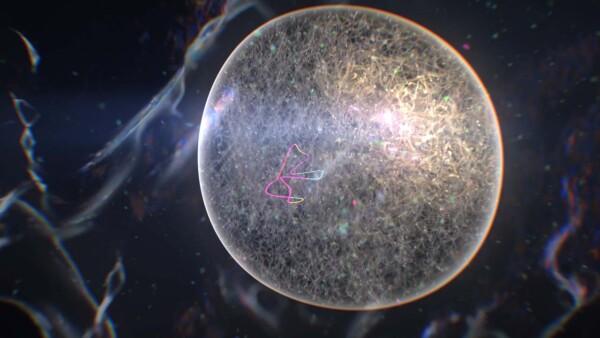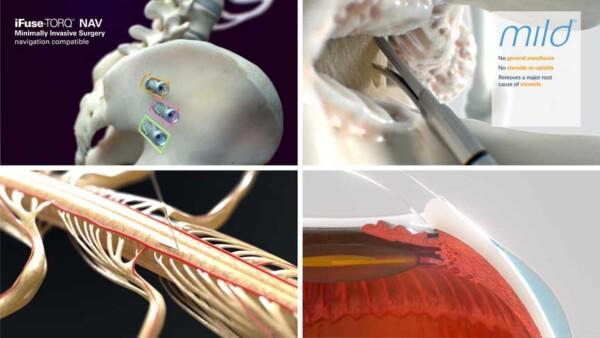The Benefit of Using Medical Animations in Education
The rapidly evolving field of medical education is continuously exploring new avenues to enhance learning. One such innovative approach is the use of medical animations, developed by specialized medical animation studios, to simplify complex concepts. By leveraging the expertise of medical animators, educational institutions and medical professionals are transforming the traditional methods of imparting knowledge.
Medical animation studios are at the forefront of this revolution. They create high-quality, accurate, and visually engaging animations that breathe life into theoretical concepts. Their work often becomes a bridge, facilitating better understanding between intricate medical science and students.
So, what are the benefits of using medical animations in education? Let's delve into this.
Enhanced Understanding of Complex Concepts
Medical animators create immersive and interactive learning materials that make it easier for students to grasp complex medical procedures, intricate biological processes, and detailed anatomical structures. This not only promotes understanding but also boosts information retention, an essential aspect of medical education.
Engaging and Interactive Learning Experience
Medical animations developed by medical animation studios provide an interactive and engaging learning experience. They make use of stunning visuals, sound, and sometimes even augmented or virtual reality. This approach increases student engagement and motivates self-directed learning, a critical skill for lifelong medical education.
Efficient Time Utilization
Medical animations can condense hours of lecture into a short, visually captivating animation. This allows for efficient time utilization, as students can learn at their own pace. Additionally, medical animators can highlight the most important aspects of a concept, ensuring that students focus on the key learning points.
Accessible Learning
Medical animation studios are creating a more accessible learning environment. Animations can be easily shared and accessed anytime, anywhere. This flexibility allows for continuous learning, accommodating various learning styles and paces.
Improved Communication
Medical animations are an effective tool for improved communication. They can be used to explain complex procedures or conditions to patients, ensuring that they fully understand their medical situation. In this way, medical animators contribute significantly to patient education and healthcare communication.
Now that we've covered the benefits, it's evident that medical animators and studios play a significant role in modern medical education. But how do you choose the right studio?
Choosing the Right Medical Animation Studio
The choice of a medical animation studio is critical, as it directly affects the quality of the educational material. When selecting a studio, consider their experience, portfolio, accuracy of content, and technological capabilities.
A good medical animation studio should have a team of skilled medical animators who understand the science behind the art. Their work should be scientifically accurate, visually engaging, and tailored to your specific educational needs.
Moreover, the studio should keep up with the latest technology trends, such as virtual and augmented reality. These technologies are driving the future of medical education, and a forward-thinking studio will be equipped to integrate them into their animations.
In conclusion, the use of medical animations in education offers a myriad of benefits. They provide an engaging, accessible, and effective method of teaching complex medical concepts. Medical animation studios, with their team of skilled medical animators, are leading the way in this innovative educational approach. By choosing the right studio, educational institutions and medical professionals can significantly enhance their teaching strategies and contribute to better learning outcomes.
How Animation Can Enhance Scientific Communication
In the rapidly evolving world of scientific communication, technology continually reinvents the ways we share and understand complex concepts. Among the various tools at our disposal, animation stands out as a particularly transformative one. This post delves into the fascinating fusion of animation and scientific communication, with a particular focus on the critical role played by medical animators. As we explore the potential of animation in making science more accessible and engaging, we'll see how it aids in everything from patient education to explaining the most complex scientific research, democratizing science in the process and paving the way for a future where scientific knowledge is within everyone's reach.
Animation: Making Scientific Communication Accessible
Often, scientific communication is a complex process that can be difficult for non-experts to comprehend. This is particularly true for fields like medicine and biotechnology, which deal with intricate mechanisms that happen at the microscopic or even molecular level. Here, the job of a medical animator becomes instrumental. By using their talent to visualize these processes, these specially trained animators help create a more accessible and comprehensible version of scientific communication.
For example, consider the communication of a concept like protein synthesis or the pathway of a drug through the body. Traditionally, these mechanisms have been represented by static illustrations or complex biochemical charts. While informative, they can be challenging for non-experts to interpret. However, an animation can depict these same processes in a sequential, dynamic manner, highlighting each step and allowing viewers to visualize the process as it occurs.
This approach not only aids in comprehension but can also spark interest and engagement. Complex scientific ideas, when depicted in an animated format, become fascinating journeys of discovery that draw in the viewer. This is particularly crucial in an era where scientific literacy is increasingly important, yet many find science intimidating or inaccessible.
Furthermore, because animations can be paused, replayed, and viewed at one's own pace, they provide a more learner-friendly medium. They cater to individual learning speeds and allow viewers to focus on parts they find challenging, facilitating a more comprehensive understanding. This combination of accessibility, engagement, and adaptability makes medical animation a potent tool in scientific communication.
The Power of Visual Learning in Scientific Communication
Visual learning is a widely accepted and effective learning style. Medical animators employ this technique to depict scientific scenarios with precision and detail. The use of animation in scientific communication can transform static, complicated diagrams into dynamic, interactive visualizations. This aids in making the communication process more engaging, thereby increasing understanding and retention of information.
Furthermore, animation allows for a universal language that transcends disciplinary jargon and cultural barriers. It gives form to theoretical concepts, visualizing them in a manner that everyone on a team can understand, irrespective of their individual expertise. The transformative effect of medical animation in various scientific domains extends even further when we consider its potential in facilitating collaborative efforts. As teams of scientists from diverse fields and geographical locations work together on complex research projects, clear and precise communication is crucial. However, written descriptions and static diagrams may not always capture the full breadth of a concept, and that's where animation comes in.
Democratizing Scientific Communication: Role of Medical Animators
Medical animators also play a crucial role in the democratization of scientific communication. Traditionally, research findings and scientific concepts have been locked behind the complex language of research papers. But with the advent of digital platforms and the work of medical animators, scientific communication has become more inclusive and accessible.
Notably, this increased accessibility extends beyond laypeople seeking to understand complex scientific concepts for personal or professional reasons. It has also found its way into classrooms, from primary schools to universities. Teachers and professors can use animated medical videos as educational tools, presenting scientific theories in an engaging and comprehensible manner that enhances student understanding and fosters a love of science.
The work of medical animators has also influenced policy-making and public health initiatives. Clear, easy-to-understand animations can illustrate the spread of diseases or the impact of public health measures, providing crucial information for policy-makers and helping the public understand why certain measures are needed.
Moreover, scientific startups and research institutions are increasingly leveraging animations to communicate their work to investors and the public. This not only aids in securing funding but also promotes transparency and trust. Through these examples, it's clear that medical animators are not just making scientific communication more understandable—they are also contributing to a more informed and engaged society.
Enhancing Patient Education through Animation
Another aspect where animation assists scientific communication is in patient education. Understanding medical conditions and treatments can be intimidating and confusing for patients. However, animations produced by medical animators can simplify this process, effectively explaining conditions, treatments, or procedures.
For instance, a patient diagnosed with a cardiac issue can watch an animation of the heart's functioning, allowing them to visualize and comprehend the underlying problem. In a similar vein, patients undergoing a complex surgical procedure can benefit from a step-by-step animated walkthrough of the surgery, giving them a clearer understanding and reducing apprehension.
Furthermore, animation can be an invaluable tool for illustrating lifestyle impacts on health. Patients struggling with chronic diseases such as diabetes or hypertension could watch animations that detail the effects of diet, exercise, and medication adherence on their health. Such visual representations can motivate patients to adhere to their prescribed treatment plan more effectively, as they have a clear understanding of why each step is crucial.
In pediatric care, animation can be an effective means to educate and calm young patients who might be frightened about medical procedures. By incorporating elements of storytelling and familiar characters, animated medical videos can make the process less daunting for children. This not only benefits the child but also aids in the interaction between medical professionals and parents, ultimately facilitating better healthcare delivery.
Conclusion
In the world of scientific communication, the role of a medical animator is thus increasingly becoming indispensable. They translate the abstract into the tangible, the microscopic into the visible, and the complicated into the comprehensible. Animation opens up avenues for scientific communication to be more engaging, comprehensive, and inclusive. As we progress in the digital age, the role of animation in scientific communication will only grow, creating an exciting future where science is within everyone's reach.
You might also like
- Scientific Animation and the Biotech Comeback: Lighting the Spark for Dormant Innovation
- AI in Medical Animation: A Game-Changer or Not Quite There Yet?
- How Medical Animation is Made and Why It’s Essential for Healthcare and Biotech
Everything You Wanted to Know About Contract Research Organizations (From a Scientific Animation Studio’s Perspective)
As a scientific animation studio, we have had a unique view of the vast technological breakthroughs in the rapidly evolving world of healthcare, pharmaceuticals, and biotechnology, and Contract Research Organizations (CROs) have emerged as indispensable players. CROs are professional service organizations that provide support to the pharmaceutical, biotechnology, and medical device industries in the form of research services outsourced on a contract basis. As the name suggests, these organizations are contracted by other entities to perform research that the hiring entity may not have the resources or expertise to conduct themselves. In recent years, we have experienced the growth of this distinctive industry first-hand with increasing requests for scientific animation from the CRO community.
What Exactly Does a Contract Research Organization Do?
The range of services provided by a Contract Research Organization can be broad and varied, but the primary aim is to streamline the drug development process, from discovery to post-market surveillance. They offer services such as preclinical research, clinical trial data management, quality and metric reporting, regulatory submission, and many more.
In a typical scenario, a pharmaceutical company might contract with a CRO to conduct clinical trials for a new drug. The CRO would handle all aspects of the trial, including designing the study, selecting and managing study sites, enrolling patients, collecting and analyzing data, and preparing necessary regulatory documents.
Another possibility is that a CRO might have a unique cell culture and analysis capability that might help pharmaceutical companies better characterize their drug candidates. It's these kinds of unique services that tend to benefit from scientific animation, in which a CRO has a technology or protocol that offers value not found anywhere else.
Why Are Contract Research Organizations Important?
There are several reasons why the role of Contract Research Organizations has grown in significance over the years.
1. Expertise: CROs are home to experts in a variety of fields necessary for the complex process of drug development. Their teams consist of medical and regulatory experts, biostatisticians, clinical trial managers, and data specialists, among others. Their accumulated knowledge and experience help reduce the risks and costs associated with drug development.
2. Speed and Efficiency: CROs can expedite the drug development process. As they specialize in conducting trials, they have established systems and processes in place that can navigate through the different stages of drug development efficiently.
3. Cost-Effectiveness: Hiring a CRO can be a cost-effective move for many companies. Instead of investing in infrastructure, staff, and technology for conducting trials, companies can outsource these functions to a CRO, which already has these resources in place.
4. Global Reach: CROs often have an international presence, enabling companies to conduct trials in multiple countries simultaneously. This can increase the diversity of patient populations in a trial and speed up patient recruitment, leading to faster results.
Considerations When Hiring a Contract Research Organization
When it comes to hiring a Contract Research Organization, it’s essential to find the right fit. Here are some factors to consider:
1. Therapeutic Expertise: Does the CRO have experience in your therapeutic area? A CRO with relevant experience can bring invaluable insights and avoid common pitfalls.
2. Quality Assurance: Make sure the CRO has a robust quality management system in place. Mistakes in the drug development process can have serious consequences, so it’s crucial that the CRO has systems to ensure accuracy and compliance.
3. Communication: Clear and regular communication is key to a successful partnership. Make sure the CRO is committed to transparency and regular updates.
4. Customization: Every project is unique, and the CRO should be willing to customize its services to meet your specific needs.
Contract Research Organizations play a crucial role in the healthcare industry. They offer a way for companies to navigate the complicated process of drug development more efficiently and cost-effectively. However, it’s essential to choose a CRO that aligns with your project's needs and company's values. With careful selection and clear communication, a partnership with a CRO can bring significant benefits to your drug development journey.
If you work in the Contract Research Organization sphere, and would like to see what scientific animation can do to explain your technology to your clients, set up a quick 15-30 minute consultation. Our science animators are happy to work with you to determine if animation is right for your particular technology.
You might also like
- Scientific Animation and the Biotech Comeback: Lighting the Spark for Dormant Innovation
- AI in Medical Animation: A Game-Changer or Not Quite There Yet?
- How Medical Animation is Made and Why It’s Essential for Healthcare and Biotech
How to Use Molecular and Cellular Biology Animation to Reach Your Investors
In the evolving landscape of biotech and healthcare industries, effective communication is integral to engaging investors. One powerful tool that's making waves is medical animation, or, specifically, molecular and cellular biology animation. This innovative approach enables us to visualize complex biological processes in a way that's both visually engaging and scientifically accurate. But, how can you utilize this type of medical animation to reach your investors effectively? Let's explore.
Understanding Molecular and Cellular Biology Animation
The first step is understanding what molecular and cellular biology animation is. In essence, it's a tool that transforms complex, often abstract scientific concepts into easily digestible, visual content. This type of medical animation can illustrate the intricacies of cellular structures, molecular pathways, or genetic processes, making it a critical asset in conveying the complex science that underpins your biotech startup or pharmaceutical company.
To begin incorporating molecular and cellular biology animation into your communication strategies, you'll need to identify key concepts or processes that are central to your business. For example, if your company is developing a new cancer drug, a medical animation could illustrate how the drug interacts with cancer cells at a molecular level. By simplifying these complex processes, your animation can help investors understand the basis of your technology, thereby fostering confidence in your business's potential.
Once you've identified the core biological processes that you want to illustrate, the next step is creating the animations. While there are many animation software programs available, creating molecular and cellular biology animation requires specialized knowledge and skills. Therefore, collaborating with a professional medical animator with experience in the field can be beneficial. They can help ensure that your animations are both scientifically accurate and visually engaging, resulting in fewer delays and embarrassing moments as a result of misunderstanding the science and allowing mistakes to creep into the final product.
Scientific Storytelling
Using molecular and cellular biology animation is not only about presenting scientific data. It's also about telling a story. Remember, your investors may not have a strong science background, so it's essential to weave a narrative around the animations. This narrative should clearly explain what's happening in the animations, how it relates to your business, and why it matters. This storytelling approach can make the scientific concepts more relatable and help your investors understand the potential impact of your work.
Presenting Your Finished Medical Animation
After creating your molecular and cellular biology animation, it's time to showcase it. Use these animations during investor meetings, presentations, conferences and on your company's website. You can also incorporate them into your social media strategy. By putting these animations at the forefront of your communications, you can help investors visualize your technology, understand its potential, and see the value in your business.
Last Thoughts
In summary, molecular and cellular biology animation is a powerful tool for bridging the gap between complex science and investor understanding. By identifying key biological processes, collaborating with experienced medical animators, weaving a compelling narrative, and showcasing your animations effectively, you can use this tool to engage your investors and drive investment in your business.
Ultimately, molecular and cellular biology animation is not just about making science more accessible; it's about making your business more attractive to investors. By bringing your technology to life through medical animation, you can transform complex science into compelling stories, helping your investors see the potential in your business and making them more likely to invest.
If you are ready to see your science in motion, contact us to set up a quick 15-30 minute call. We will be happy to see if medical animation is the right strategy for reaching your investors.
You might also like
- Scientific Animation and the Biotech Comeback: Lighting the Spark for Dormant Innovation
- AI in Medical Animation: A Game-Changer or Not Quite There Yet?
- How Medical Animation is Made and Why It’s Essential for Healthcare and Biotech
Molly Huttner's Biomedical Animation is Accepted into the Electronic Theater at SIGGRAPH 2023
We are thrilled to announce that our very own Molly Huttner, biomedical animator at Microverse Studios, has been accepted into the prestigious Electronic Theater at SIGGRAPH 2023. Her ground-breaking animation, "Changing the Way We Look At Cells," has been recognized for its innovative and engaging presentation.
SIGGRAPH's Electronic Theater is a prestigious showcase event that takes place annually during the SIGGRAPH (Special Interest Group on Computer GRAPHics and Interactive Techniques) conference. The Electronic Theater highlights the year's best in computer graphics and animation from around the world.
Selected through a rigorous judging process, the presentations often include a diverse range of works, from groundbreaking visual effects and scientific visualizations to innovative storytelling techniques and interactive art pieces. These works are often the result of collaborations between artists, researchers, and professionals in various industries including film, gaming, science, and technology.
Being featured in the Electronic Theater is a significant accomplishment in the field of animation, including biomedical animation, as it represents a high level of artistic and technical achievement in computer graphics and interactive techniques. This platform has been instrumental in celebrating and inspiring innovation in digital storytelling for several decades.
In her biomedical animation, Molly Huttner was able to transform complex scientific information into an understandable, accessible, and engaging format. This achievement is a testament to her extraordinary ability to blend art and science, creating a platform where learning and entertainment seamlessly intersect.
The inclusion of "Changing the Way We Look At Cells" at SIGGRAPH 2023, notably its 50th annual conference, is a remarkable achievement. Molly's work will be joining the ranks of previous groundbreaking animations, films, and digital artworks that have left indelible marks on the industry.
Molly's biomedical animation was commissioned by our esteemed client, CytoTronics, a leading biotechnology firm, known for their cutting-edge research in cell biology and molecular science. Founded on the principles of innovation, collaboration, and scientific excellence, CytoTronics is committed to developing groundbreaking solutions in the field of disease diagnosis and treatment. Through cutting-edge research and development, the company is consistently pushing boundaries to enhance our understanding of cellular processes, aiming to improve human health and transform the future of medicine.
We at Microverse Studios are incredibly proud of Molly Huttner's accomplishments. It's an honor to work with such a talented individual who continually pushes the boundaries of creativity and innovation in biomedical animation.
You might also like
- Scientific Animation and the Biotech Comeback: Lighting the Spark for Dormant Innovation
- AI in Medical Animation: A Game-Changer or Not Quite There Yet?
- How Medical Animation is Made and Why It’s Essential for Healthcare and Biotech
4 Common (and Costly) Mistakes to Avoid While Developing Your Medical Animation
Medical animations are worthy investments that deliver value across your business, but the truth is that high-quality 3D medical animation services are expensive. Add communication snafus and process hiccups to the mix, and the budget can quickly balloon. While our system is designed from the ground up to be able to accurately predict our costs from the beginning and avoid any scope creep, we’ve heard a lot of stories from our clients. In our nearly twenty years as a full-service scientific and medical animation studio, we’ve seen it all, but here are the four most common mistakes we work to help our clients avoid:
Mistake #1: Selecting a 3D Medical Animation Studio Without Scientific Expertise
This is a big one. Countless times we’ve had clients come to us after many months and dollars wasted on what turned out to be an unusable final product because they chose low-cost medical animators or ones without scientific expertise. When it comes to 3D medical animation services, you get what you pay for, so beware of lowball estimates—they’re a sign that they’re not paying experienced animators or those with graduate-level scientific education. Most commonly, we see a talented studio with a stellar portfolio falter because they lack the scientific expertise required to produce medically accurate animations that will survive the rigors of the scientific and legal review process. Best-case scenario, companies hiring non-scientifically trained studios should expect heavy hand holding throughout the process. Take it from us—hire a qualified 3D medical animation studio for the job.
Mistake #2: Not Keeping Your Medical and Legal Review Submission Guidelines Up Front Times in Mind During Scheduling
“That regulatory review process was a breeze!” said no one, ever. Seriously, plan for this like it’s the approval apocalypse. Even tiny errors can result in rejections, and big ones can explode production timelines, triggering vicious revision cycles that chip away at your team and take huge bites from the budget. This is sometimes an unavoidable feature of the review process, but when your timeline for deployment of your medical animation is critical, you have to factor these kinds of delays into your plan. To prevent this, meet with your legal team before starting work on your medical animation project.
Also, make sure you communicate submission guidelines for EVERY deliverable they’ll be reviewing with your medical animators so that they can keep things running smoothly on their end. Find out their submission days and turnaround time to ensure your production schedule reflects reality, and learn of any other potential pitfalls they foresee. Knowing these requirements up front and communicating them effectively to your team will go a long way to avoiding surprises in the review process. The last thing you want is for a project that once had plenty of time to switch to one with a tight deadline.
Mistake #3: Failing To Get Every Element Approved Before Moving Forward
There are three major deliverables in the medical animation development process: the script, the storyboards, and the final animation. On the 3D medical animation studio side, the production process is designed to ensure each deliverable is reviewed and approved before the next development phase can begin, but the various reviewing bodies on the client side sometimes creates complexities and communication chasms that allow minor items to fall through the cracks. Small oversights create big headaches, so make sure EVERY element is thoroughly reviewed before approving your studio’s deliverable.
For the script, this means all text, including voiceover narration and all words appearing on screen, both captions and labels. The storyboards show the narrative progression of the medical animation, shot by shot. It’s the blueprint the medical animators use to create the final product, so the action of every scene must be scrutinized in detail before giving approval. In the final phase of development, the animation process, changing the content can spiral costs for some studios. Make sure your approvals are bulletproof.
Mistake #4: Not Streamlining Feedback from Key Stakeholders
We’ve seen it before, and we’ll see it again—key stakeholders on the client side offering conflicting direction, or a rogue CEO coming in at the last minute to change key details, creating project upheaval. We can’t emphasize enough the importance of appointing a capable point person to lead the project on the client side, who can ensure that all stakeholders are involved in the review process. With so many departments weighing in, it’s essential for one person to be responsible for consolidating, confirming, and reconciling feedback from all stakeholders before communicating it to your development partner. When internal disagreement on the client side spills over into the development process, precious project hours are spent untangling confusion instead of creating groundbreaking medical animation. Know your stakeholders and make sure they’re in alignment!
Conclusion
The process of creating a high-quality medical animation is a complex, intricate, and costly endeavor. It demands not only artistic and technical skills but also a deep understanding of the illustrated scientific principle. To navigate this process successfully and economically, it's crucial to avoid common pitfalls. This includes selecting a 3D medical animation studio with scientific expertise, proactively managing your medical and legal review submission guidelines, ensuring meticulous approval of each development phase, and streamlining feedback from key stakeholders. By circumventing these common mistakes, businesses can effectively leverage the power of medical animations, resulting in cost-effective, impactful, and scientifically accurate visual tools that ultimately enhance the understanding of complex medical concepts.
You might also like
- Scientific Animation and the Biotech Comeback: Lighting the Spark for Dormant Innovation
- AI in Medical Animation: A Game-Changer or Not Quite There Yet?
- How Medical Animation is Made and Why It’s Essential for Healthcare and Biotech
Microverse Studios Celebrates 4 Awards at The Communicator Awards for Its Work in Science Communication
Science Communicaton Is at the Heart of What We Do
We are thrilled to announce that Microverse Studios, a leading creative digital agency specializing in science communication, has won four prestigious awards at The Communicator Awards, the leading international awards program recognizing big ideas in marketing and communications. The Communicator Awards, which are judged by the Academy of Interactive & Visual Arts (AIVA), honor work that transcends innovation and craft, and sets the industry benchmark for exceptional achievement.
Microverse Studios has been recognized for its excellence in creating engaging and thought-provoking content, helping clients communicate complex scientific concepts in a clear and compelling way. The agency has been awarded for its work with clients BioSkryb, CytoTronics, Apertor, and Alexandria Professional®, showcasing its versatility in addressing diverse scientific topics.
The specific awards won by Microverse Studios are as follows:
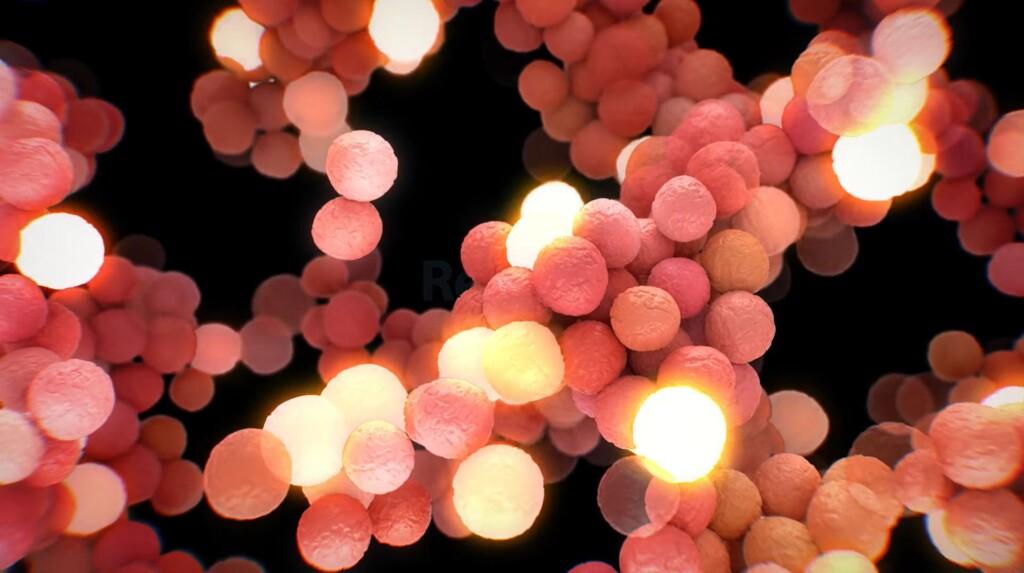
Discover ResolveOME: The Next Step in Cancer Research
Award of Excellence
for client BioSkryb
"Discover ResolveOME: The Next Step in Cancer Research" is a captivating animation that delves into the groundbreaking technology developed by BioSkryb, which has the potential to revolutionize cancer research and diagnostics. The video combines stunning visuals with a clear and concise narrative, making the complex science behind the ResolveOME platform accessible to a wide audience. The Award of Excellence is the highest honor bestowed by the AIVA, and Microverse Studios is proud to have its work with BioSkryb recognized with this prestigious accolade.
Changing the Ways We Look at Cells
Award of Distinction
for client CytoTronics
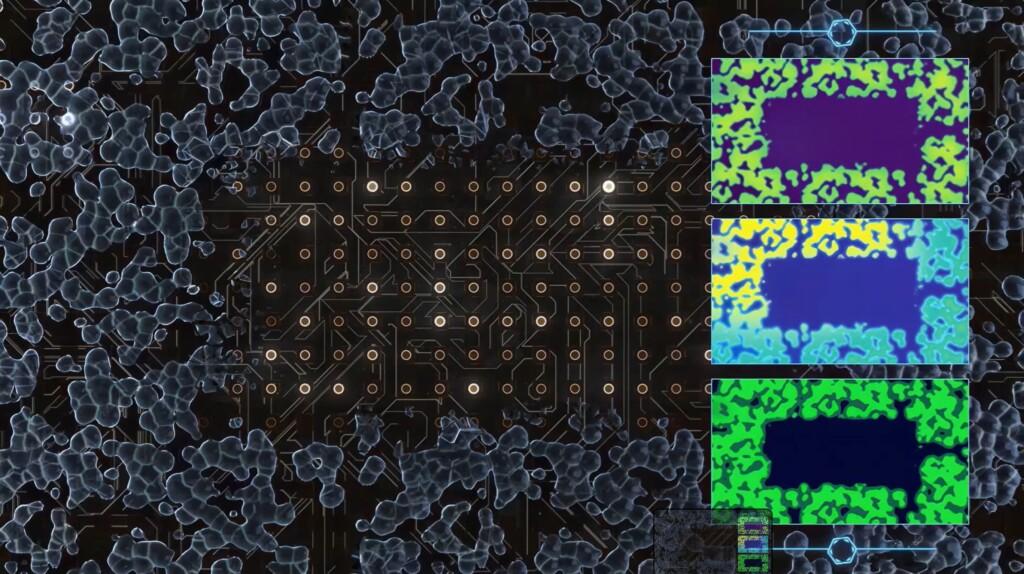
In this visually engaging and informative video, Microverse Studios takes viewers on a journey into the world of cellular imaging, showcasing the innovative technologies developed by CytoTronics. "Changing the Ways We Look at Cells" effectively communicates the significance of these advances, explaining how they enable researchers to gain a deeper understanding of cellular processes, ultimately contributing to the development of novel therapeutics.
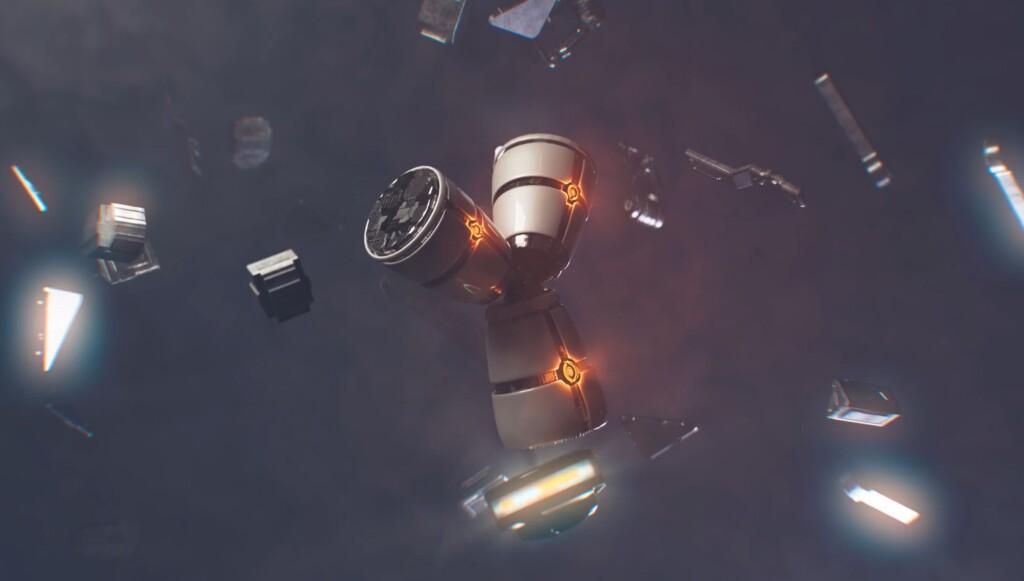
Manipulating the Machinery of Life
Award of Distinction
for client Apertor
"Manipulating the Machinery of Life" is a compelling biotech animation that introduces viewers to the cutting-edge gene editing technologies pioneered by Apertor. Through eye-catching visuals and an easily digestible narrative, Microverse Studios helps convey the transformative potential of these innovative tools, which hold the promise of advancing our understanding of biology and accelerating the development of new therapies.
The Science of Sugaring Hair Removal – The Kennedy Theory®
Award of Distinction
for client Alexandria Professional®
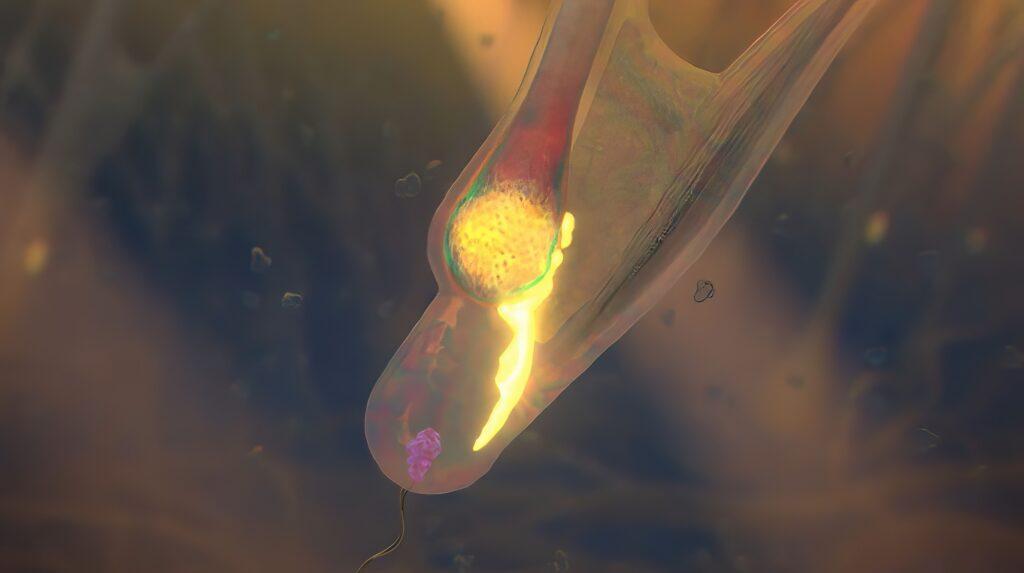
This educational and visually captivating video explores the science behind sugaring hair removal, as developed by Alexandria Professional® through The Kennedy Theory®. Microverse Studios artfully communicates the benefits of this natural, eco-friendly, and effective hair removal method, making it accessible and appealing to a broad audience.
At Microverse Studios, we are passionate about helping our clients communicate their scientific stories in the most engaging and impactful way possible. We are deeply honored to have our work recognized by the AIVA and the Communicator Awards, and we remain committed to pushing the boundaries of creativity and innovation in science communication. We would like to express our heartfelt gratitude to our clients for entrusting us with their visions and congratulate our talented team for their dedication, skill, and hard work.
You might also like
- Scientific Animation and the Biotech Comeback: Lighting the Spark for Dormant Innovation
- AI in Medical Animation: A Game-Changer or Not Quite There Yet?
- How Medical Animation is Made and Why It’s Essential for Healthcare and Biotech
Microverse Studios Wins Prestigious Gold Stevie Award for Pharmaceutical Video
Microverse Studios is proud to announce that we have won the sole Gold Stevie in the new Pharmaceutical Video Category at The American Business Awards. This highly coveted recognition was awarded for the exceptional work done in collaboration with One Design Company and our client Generate: Biomedicines on the animated video titled "How AI Will Revolutionize Medicine."
The American Business Awards, also known as the Stevie Awards, are the premier business awards program in the United States. They honor outstanding achievements by organizations and professionals in a wide range of industries. The new Pharmaceutical Video category was introduced this year to recognize the growing importance of visual storytelling in the healthcare and pharmaceutical arenas.
Microverse Studios' award-winning biotech animation is an engaging and educational piece that showcases the transformative potential of artificial intelligence (AI) in the biomedicine sector. The team at Microverse Studios produced a visually stunning and informative pharmaceutical video that successfully conveys complex scientific concepts in a clear and accessible manner. You may view the winning animation on our biotech animation page.
Generate: Biomedicines, a cutting-edge company at the forefront of AI-driven drug discovery, uses machine learning to accelerate the development of breakthrough therapeutics. By harnessing the power of AI, the company aims to create a more efficient and effective approach to medicine, ultimately benefiting patients worldwide. More information about Generate: Biomedicines can be found on their website at https://generatebiomedicines.com/.
We are incredibly honored to receive this prestigious award, which reflects our commitment to delivering exceptional visual storytelling for our clients. Working on this project was an exciting opportunity to showcase the power of AI in revolutionizing medicine. We are grateful for the recognition and look forward to continuing to produce high-quality biotech animations that inspire, educate, and inform.
You might also like
- Scientific Animation and the Biotech Comeback: Lighting the Spark for Dormant Innovation
- AI in Medical Animation: A Game-Changer or Not Quite There Yet?
- How Medical Animation is Made and Why It’s Essential for Healthcare and Biotech
How Cell and Molecular Biology Animations are Advancing Outreach to Healthcare Providers
Given their busy workloads and the breathtaking pace of scientific advancement, healthcare providers (HCPs) aren’t always aware of the latest research or educated about breakthrough therapies and devices. These constraints demand the most efficient and effective modes of communication for HCP outreach, and medical animation fits the bill. Cell and molecular biology animations, both just two of the many types of medical animation today, are the best way to fully and effectively visualize complex biological processes happening at the microscopic level for audiences with standard technological knowhow, and video remains the optimal medium for packing the most information into the shortest amount of time in the user experience.
Here are a few ways 3D medical animation services are advancing outreach to HCPs:
Cell and Molecular Biology Animation Helps Healthcare Providers Fill in Knowledge Gaps
The rapid acceleration of medical science, particularly in genomics, immunotherapy, and personalized medicine make it nearly impossible for physicians to keep pace. A 2020 study in rare diseases found that nearly two-thirds of respondents were unaware of FDA-approved gene therapy options in their field of practice, and studies surrounding COVID outreach dug deep on HCP education, concluding that pharmaceutical companies need to help maintain momentum and focus on a digital mindset by prioritizing HCP requests and generating high-quality, bite-sized, and compliant education.
The versatility and accessibility of video content, when combined with the specialized science behind cell and molecular biology animation, makes it the optimal medium for ongoing HCP education. Video content delivers better information retention and comprehension while allowing maximum flexibility for viewing. Video is also the best learning tool for information retention because it combines auditory and visual stimuli, catering to various learning styles and enhancing engagement. The dynamic nature of video content allows for the seamless integration of storytelling, demonstrations, and real-life examples, making complex topics more relatable and easier to understand.
And unlike printed material, which can be time-consuming to absorb and easy to misplace, medical animations are accessible online via any device, and can be easily shared in any electronic communications medium. Busy workdays often demand HCPs to consume educational material on their own time, and having this content in their pocket goes a long way to ensuring they will watch it. Moreover, videos offer the possibility to pause, rewind, and rewatch content, enabling learners to review and consolidate information at their own pace, ultimately improving retention.
Cell and Molecular Biology Animation Helps Healthcare Providers Better Educate Their Patients
Doctors aren’t the only ones that can benefit from medical animation’s accessibility, versatility, and superior ability to communicate complex concepts in a visual, easy to understand format. Patients, the very people for whom these scientific breakthroughs are made, stand to benefit in several ways.
Research consistently shows that patient engagement and investment in treatment as well as strong support networks lead to better outcomes. And, unfortunately, time spent with one’s physician is at a premium in today’s medical environment due to physician shortages and increasing healthcare costs. Arming HCPs with high-quality animations improves HCP-patient relations and empowers providers to help patients make better, more informed decisions about treatments while helping them optimize time with their patients.
Additionally, these videos conform with the way we consume information today. Healthcare providers and patients can view these cell and molecular biology animations on their phones, tablets, or computers anytime and anywhere, and even share with patients’ families and support networks.
Cell and Molecular Biology Animations Increase HCP Confidence in Prescribing Therapies
These specialized medical animations instill confidence in providers by allowing them to gain a deeper understanding of the groundbreaking science behind therapies proposed, and in turn, allow them to impart better understanding to their patients. By keeping HCPs current on advancements in therapy and research, cell and molecular biology animations reassure doctors that they are prescribing the most appropriate and effective treatments available for their patients. This reassurance extends past prescribing physicians. Patients with more complex issues often have teams of doctors. These visual aids can help clarify ambiguities and ensure a consistent understanding across healthcare teams with various specializations.
Furthermore, confident providers create hopeful patients, and a patient’s state of mind is essential to overall health and positive outcomes.
Because health care providers have a high degree of understanding of the science in their field, accuracy and visual production quality are critical to maintaining HCP interest. And while many artists trained in 3D animation may produce beautiful visuals, medical animators are trained in both animation and the deep science necessary to merge both disciplines most effectively and accurately.
If you are in need of educational content for patients or healthcare providers, we would love to set up a 15-30 minute call to discuss your project.
Sources:
- https://www.frontlinemedcom.com/gene-therapy-knowledge-gaps-among-hcps/
- https://epghealth.com/reports/the-gaps-between-hcp-demand-and-pharma-
supply-of-medical-information/
You might also like
- Scientific Animation and the Biotech Comeback: Lighting the Spark for Dormant Innovation
- AI in Medical Animation: A Game-Changer or Not Quite There Yet?
- How Medical Animation is Made and Why It’s Essential for Healthcare and Biotech
6 Medical Device Marketing Mistakes to Avoid
The medical device industry is rapidly growing and constantly evolving. With numerous innovations and advancements in medical technology, even the most experienced marketers can make mistakes when creating campaigns for this niche industry. It's essential for these professionals to keep up with the trends to ensure their efforts are successful and that they are not missing opportunities. In this post, we'll explore six common medical device marketing mistakes to avoid and discuss how incorporating medical device animation and medical technology animation can enhance your marketing strategy.
1. Ignoring the Importance of Medical Device Animation
We’ve discussed, in previous posts, the advantages of video over other forms of scientific communication, so I won’t belabor the point here. Essentially, there is no better way to capture an audience’s attention, disseminate information in a short amount of time, or even increase information retention than with a video.
Medical device animation videos have become an indispensable tool for marketers to communicate complex information about their products. Not only do they provide a visual representation of the device, but they also help to break down complex concepts into easily understandable segments. Ignoring the power of medical device animation in your marketing strategy can lead to a lack of understanding about your product's capabilities, leading to decreased interest from potential customers.
2. Failing to Tailor the Message to the Target Audience
When marketing a medical device, it's crucial to understand your target audience and create messaging that resonates with them. This may include physicians, hospital administrators, or even patients themselves in various stages of life and with concerns unique to them. Failure to tailor your messaging to the appropriate audience can result in a marketing campaign that misses the mark and fails to generate interest in your product.
3. Overlooking Regulatory Compliance
The medical device industry is highly regulated, and marketing materials must adhere to strict guidelines set by regulatory bodies such as the FDA. Overlooking these requirements can result in costly penalties and damage to your company's reputation. Ensure that your marketing materials, including medical device animation videos, are in compliance with all relevant regulations to avoid potential setbacks.
4. Neglecting Emotional Appeal in Marketing Materials
While it's essential to provide factual information about your medical device, neglecting to incorporate an emotional appeal in your marketing materials can be a significant mistake. These devices have the potential to change people's health and well-being for the better. Emphasize the human impact. Not doing so misses the greatest of opportunities for what could be more important? Potential customers want to understand how your device will improve their lives or the lives of their patients. Tell the stories of how your medical device has positively impacted patients' lives or transformed healthcare providers' daily practice. Share compelling testimonials or case studies that demonstrate the real-world benefits of your product. And if we may be so bold, include medical device or technology animation videos in your marketing materials in order to create a powerful emotional connection by showcasing how your device functions in a real-world setting.
5. Inadequate Focus on Education and Training
A critical aspect of marketing medical devices is ensuring that potential customers understand how to use them effectively. Inadequate focus on education and training can lead to confusion, frustration, and ultimately, a lack of adoption of your device. Utilize medical product animation to provide clear, step-by-step instructions for using your device, ensuring that customers feel confident in their ability to operate it safely and effectively.
6. Forgetting to Add That Sizzle to Medical Device Marketing Campaigns
Finally, in our experience, the most successful medical device campaigns have focused on developing brand confidence by framing their device as the high-end option. Turns out, luxe campaigns aren’t just for fragrances and cars. Medical device marketers would do well to not ignore the well-established strategies utilized by luxury brand marketers. Medical devices, by their nature, can be perceived as highly technical and, at times, even boring. This perception can hinder the effectiveness of marketing campaigns if they fail to capture the audience's attention and generate excitement.
Just as direct to consumer luxe campaigns must appeal to their audience’s desire for the best in life, so must the medical device marketer find creative ways to showcase their devices in a manner that piques interest and demonstrates the unique value they offer. These devices are, after all, high-end, specialized products that often take years to develop. By combining excitement with a perception of premium quality, marketers can help their medical technology stand out amongst other similar devices, transform the perception of your medical device from "boring" to "revolutionary,” and ultimately drive greater interest and adoption.
Conclusion
Avoiding these common medical device marketing mistakes can significantly improve the effectiveness of your marketing strategy. By embracing medical device animation and medical technology animation, tailoring your messaging to the target audience, adhering to regulatory requirements, focusing on emotional appeal, providing adequate education and training, and, finally, adding a little sizzle to your campaign, you can maximize the chances of success for your medical device in the competitive marketplace.
You might also like
- Scientific Animation and the Biotech Comeback: Lighting the Spark for Dormant Innovation
- AI in Medical Animation: A Game-Changer or Not Quite There Yet?
- How Medical Animation is Made and Why It’s Essential for Healthcare and Biotech
Top 5 Biotech Industry Trends To Watch Out For
There’s a massive shift coming in the ways of creating personalized medication and developing better ways to get information out to customers. New methods of ensuring investors see your medical devices are also on the rise. More medical marketing and industry trends will hit the mainstream in 2023. As your company prepares for these developments, here are the top five biotech industry trends to watch out for in the coming year.
Drug Research Improvements
The biomedical field relies heavily on drug research from medical professionals, so you need to be aware of any fraudulent information that comes your way. Keep your company protected by fact-checking your sources and ensuring the information you present in your digital marketing content is true.
Genetically Personalized Medications
Genetics plays a significant role in how medications and medical devices develop. Technology has advanced to the point that doctors and engineers can now create medicines based on human DNA.
As this trend appears from the depths of medical research, it’s your chance to gather that information and break it down into pieces that are easy for a consumer to understand and a doctor or specialist to explain to patients.
Larger Focus on Genetic Treatment
Genetics will be the main focus of 2023 and beyond as the future of medicine and pharmaceuticals expands. With more chronic illnesses rising, so will the need for better predictive medical treatments. You should focus on what your medical device or medication can do for patients and how it could transform a doctor’s treatment.
Since genetics is a huge topic, you should study and continue evaluating how often the research changes throughout the year. Consider how people in medical fields study diseases and how the conditions may be genetically inherited.
Improved Biotech Product Pricing
Pricing is a great focus for how medical procedures, devices, and medications are marketed to customers and medical professionals. As drugs improve, so do pricing methods. To help determine a medical device's price, investors receive a live demonstration, followed by a professionally made molecular biology animation.
The animation explains the essential facts to the audience so they can understand how your device works. After the demonstration and animated video, the audience should understand your device's value better. Thus, the price you put on your medicine or device makes more sense to the consumer and investor.
Film Becomes a Larger Contributor to Medical Marketing
Film is seeing a larger expansion in medical marketing. Professionals in the field are doing their part to craft content to inform consumers about products and services. Through film, consumers can get engaged in new ways, leading to discoveries of better medical treatments for their conditions, genetic or not.
A significant expansion is happening in the medical marketing realm, and your contribution is needed. Watch your product come to life through Microverse Studios. We’re an award-winning company specializing in crafting videos that hook and engage your audience. Let us help you embark on your journey by learning the biomedical industry trends and creating video content for your products.
You might also like
- Scientific Animation and the Biotech Comeback: Lighting the Spark for Dormant Innovation
- AI in Medical Animation: A Game-Changer or Not Quite There Yet?
- How Medical Animation is Made and Why It’s Essential for Healthcare and Biotech
Microverse Studios Wins Three Grand Awards at the 2023 NYX Video Awards
Every entry submitted by Microverse Studios to this year's NYX Video Awards has won top honors. The animations awarded represent some of our very best work for a diverse body of clients, including the agricultural, contract research and health & beauty industries.
The NYX Awards is a leading international awards program that recognizes, celebrates, and provides acknowledgment favoring all who possess extraordinary caliber across all facets of industries and mediums, specifically in the fields of marketing, communication, advertising, creativity, public relations, graphic design, print, digital, video, and audio. NYX simulates monumental achievements of boundless industries, viewed as a symbol of the highest standards for those who bear it.
This season, the award received over 1,500 entries from a diverse range of professionals in specialized fields spanning various countries, including the United States, Canada, United Kingdom, Italy, Japan, Spain, Sweden, Germany, and many more. The sheer number and quality of the submissions demonstrated the incredible talents and visions of the creative industry. Jurors represented professionals from their respective fields, and included Masanori Eto (Japan), Markus Pargfrieder (Austria), Vitaliy Yakin (United States), Jimmy Landaburu (Ecuador), Ronn Lee (China), Patrizia Burra (Italy), and others.
Check out our winning entries below!
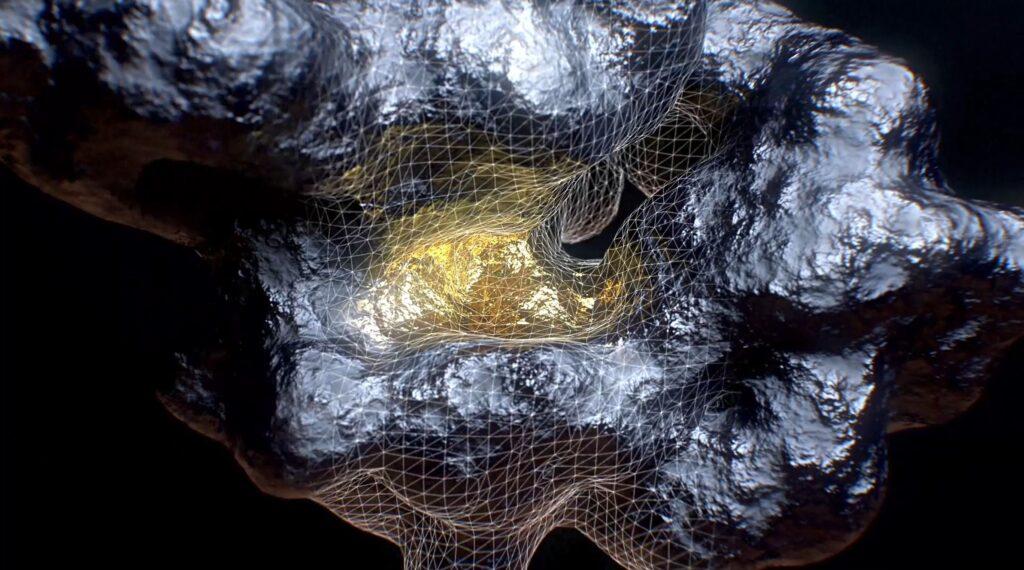
The Science of Sugaring Hair Removal – The Kennedy Theory®
Grand Winner
Video / Web Based Productions - Beauty & Cosmetics
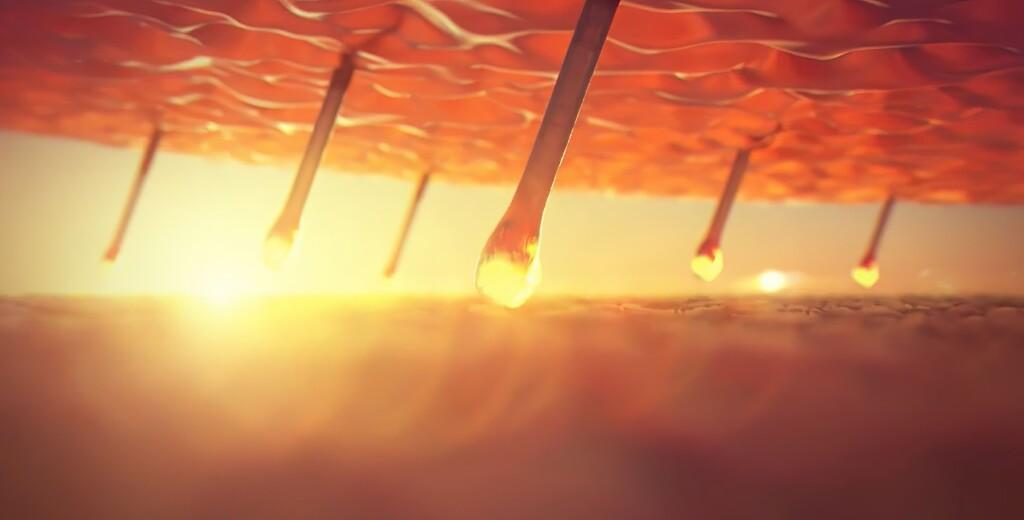
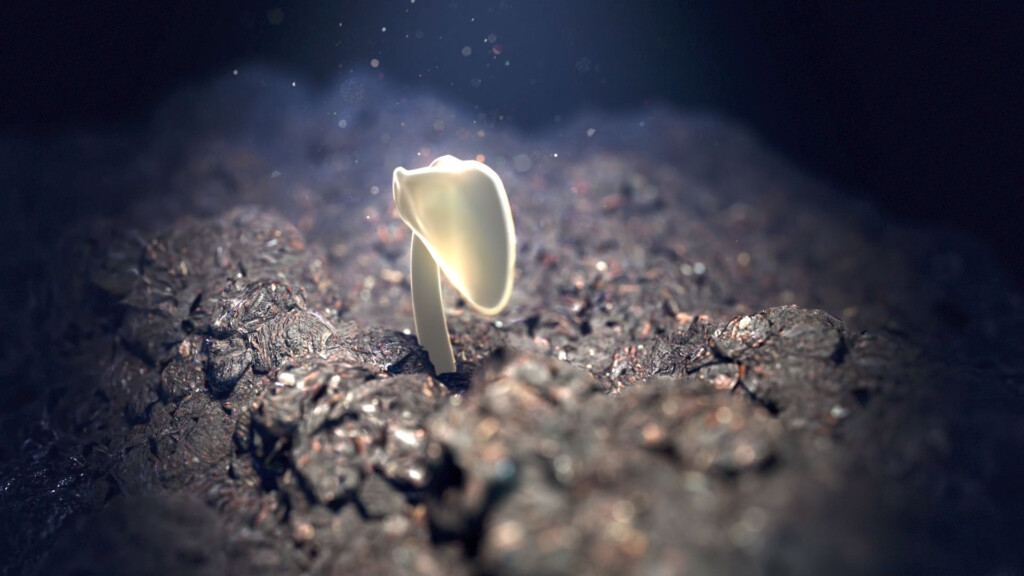
You might also like


